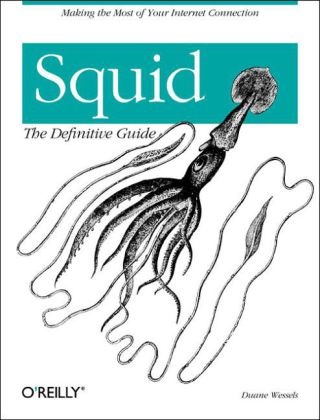Ulteriori informazioni
Zusatztext Squid is the most popular Web caching software in use today! and it works on a variety of platforms including Linux! FreeBSD! and Windows. Squid improves network performance by reducing the amount of bandwidth used when surfing the Web. It makes web pages load faster and can even reduce the load on your web server. By caching and reusing popular web content! Squid allows you to get by with smaller network connections. It also protects the host on your internal network by acting as a firewall and proxying your internal web traffic. You can use Squid to collect statistics about the traffic on your network! prevent users from visiting inappropriate web sites at work or school! ensure that only authorized users can surf the Internet! and enhance your privacy by filtering sensitive information from web requests. Companies! schools! libraries! and organizations that use web-caching proxies can look forward to a multitude of benefits.Written by Duane Wessels! the creator of Squid! Squid: The Definitive Guide will help you configure and tune Squid for your particular situation. Newcomers to Squid will learn how to download! compile! and install code. Seasoned users of Squid will be interested in the later chapters! which tackle advanced topics such as high-performance storage options! rewriting requests! HTTP server acceleration! monitoring! debugging! and troubleshooting Squid.Topics covered include:* Compiling and installing Squid* Running Squid* Using Squid's sophisticated access controls* Tuning disk storage for optimal performance* Configuring your operating system for HTTP interception* Forwarding Requests to other web caches* Using redirectors to rewrite user requests* Monitoring Squid with the cache manager and SNMP* Using Squid to accelerate and protect HTTP servers* Managing bandwidth consumption with Delay Pools. Informationen zum Autor Duane Wessels became interested in web caching in 1994 as a topic for his master's thesis in telecommunications at the University of Colorado, Boulder. He worked with members of the Harvest research project to develop web caching software. After the departure of other members to industry jobs, he continued the software development under the name Squid. Another significant part of Duane's research with the National Laboratory for Applied Network Research has been the operation of 6 to 8 large caches throughout the U.S. These caches receive requests from hundreds of other caches, all connected in a "global cache mesh." Klappentext Squid is the most popular Web caching software in use today, and it works on a variety of platforms including Linux, FreeBSD, and Windows. Squid improves network performance by reducing the amount of bandwidth used when surfing the Web. It makes web pages load faster and can even reduce the load on your web server. By caching and reusing popular web content, Squid allows you to get by with smaller network connections. It also protects the host on your internal network by acting as a firewall and proxying your internal web traffic. You can use Squid to collect statistics about the traffic on your network, prevent users from visiting inappropriate web sites at work or school, ensure that only authorized users can surf the Internet, and enhance your privacy by filtering sensitive information from web requests. Companies, schools, libraries, and organizations that use web-caching proxies can look forward to a multitude of benefits.Written by Duane Wessels, the creator of Squid, Squid: The Definitive Guide will help you configure and tune Squid for your particular situation. Newcomers to Squid will learn how to download, compile, and install code. Seasoned users of Squid will be interested in the later chapters, which tackle advanced topics such as high-performance storage options, rewriting requests, HTTP server acceleration, monitoring, debugging, and troubleshooting Squid.Topics covered include: * Comp...
Sommario
Dedication
Preface
Chapter 1: Introduction
Chapter 2: Getting Squid
Chapter 3: Compiling and Installing
Chapter 4: Configuration Guide for the Eager
Chapter 5: Running Squid
Chapter 6: All About Access Controls
Chapter 7: Disk Cache Basics
Chapter 8: Advanced Disk Cache Topics
Chapter 9: Interception Caching
Chapter 10: Talking to Other Squids
Chapter 11: Redirectors
Chapter 12: Authentication Helpers
Chapter 13: Log Files
Chapter 14: Monitoring Squid
Chapter 15: Server Accelerator Mode
Chapter 16: Debugging and Troubleshooting
Appendix A: Config File Reference
Appendix B: The Memory Cache
Appendix C: Delay Pools
Appendix D: Filesystem Performance Benchmarks
Appendix E: Squid on Windows
Appendix F: Configuring Squid Clients
Colophon

